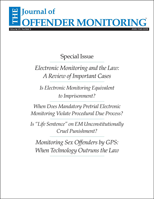Electronic Monitoring: Saving Jail Space and Protecting the Community
Author: Jeffrey B. Spelman, Ph.D..
Source: Volume 17, Number 02, Summer/Fall 2004 , pp.19-22(4)

< previous article |next article > |return to table of contents
Abstract:
Ohio’s Senate Bill 2, a “Truth in Sentencing” law, presented the criminal justice community with a new focus and challenge when it was enacted on July 1, 1996. This bill changed Ohio’s probation and parole dynamics by creating a mandatory focus on community corrections. The criminal justice community was challenged to acquire new strategies in support of new individually tailored community corrections programs. Ohio’s Richland County formed a Community Corrections Board to address the new sentencing codes and to develop a community approach to criminal justice and crime control. This new board includes representatives not only from the court system, law enforcement agencies, local government agencies, social service agencies, and victim services, but also from the community. The Correctional Board studied current supervision and treatment methods and criminal offender profiles in Richland County. They concluded that new court supervision and treatment programs were necessary to specifically address and control particular types of criminal offenders. As a result, Richland County began to use electronic monitoring and discovered the extent to which it has benefited the supervision process, reduced jail costs, and helped to protect this Ohio community. This article discusses the program and its effects.Keywords: Electronic detention; “Truth in Sentencing”
Affiliations:
1: Ashland University.